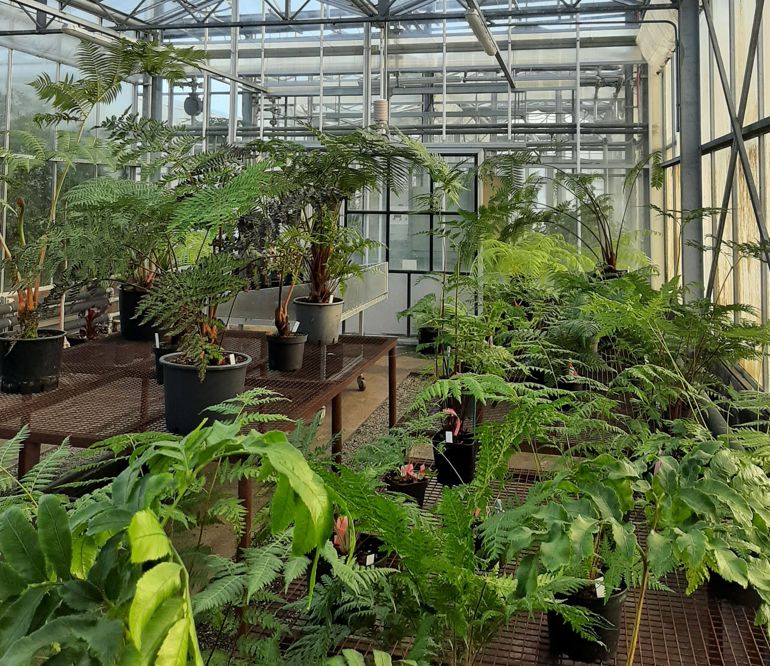Thirty-four species of tender plants are starting new lives at the National Botanic Gardens of Ireland, Glasnevin this week, as part of an international plant partnership with the Royal Botanic Garden Edinburgh (RBGE).
Originally part of Edinburgh’s Living Collection, the plants – 68 young Begonia and 38 potted tree ferns – were carefully transported across the Irish Sea to ensure their safekeeping during the Scottish Garden’s Glasshouse restoration project.
Dr Darach Lupton, Curator of National Botanic Gardens of Ireland said: “As the world’s plants face the twin challenges of biodiversity loss and the climate crisis, international partnerships such as this have never been more important.
“Providing a haven at Glasnevin will ensure the continued resilience and wellbeing of these precious specimens, some of which, such as Begonia acerifolia or the tree fern Dicksonia arborescens are under threat in the wild.”
Sadie Barber, Research Collections Manager, RBGE added: “During the project, we will move over 40,000 plants to new temporary locations. While most will remain in Edinburgh, securing alternative homes in other botanic gardens will provide an additional safeguard to their future.
“National Botanic Gardens of Ireland, Glasnevin will provide a wonderful new home for over one hundred of our tree ferns and begonias.”
As part of international plant movement regulations, before being allowed to leave Scotland, each specimen was inspected by SASA (Science and Advice for Scottish Agriculture) as a precaution against the increasing numbers of pests and diseases which threaten the plants in our gardens and the very food that we eat. Once the health of the plants was confirmed, an export certificate was issued for their removal to Ireland where they will be quarantined for six months in Glasnevin’s nursery facility.

Image: Tree ferns arrive safely at Glasnevin
This is not the only connection to Dublin for some of these plants. Three of the 16 Begonia species were unknown to science until recently and were formally described by Dr Peter Moonlight, formerly of RBGE and now Assistant Professor of Botany at Trinity College Dublin. One of the three species – Begonia joshii – was identified by Peter as new to science after amateur botanist Josh Richards stumbled across the plant in Peru and prompted the long process of confirming it as a new species. In acknowledgement of that, the species was named after him.
National Botanic Gardens of Ireland, Glasnevin and the Royal Botanic Garden Edinburgh are part of a global network of scientific research institutes that use ex-situ conservation and safe sites across the world to help safeguard the genetic diversity of plants. Edinburgh’s tree ferns and Begonias are expected to live long and happy lives at Glasnevin, with the knowledge that this additional safety net will help spread the load of conservation horticulture.

